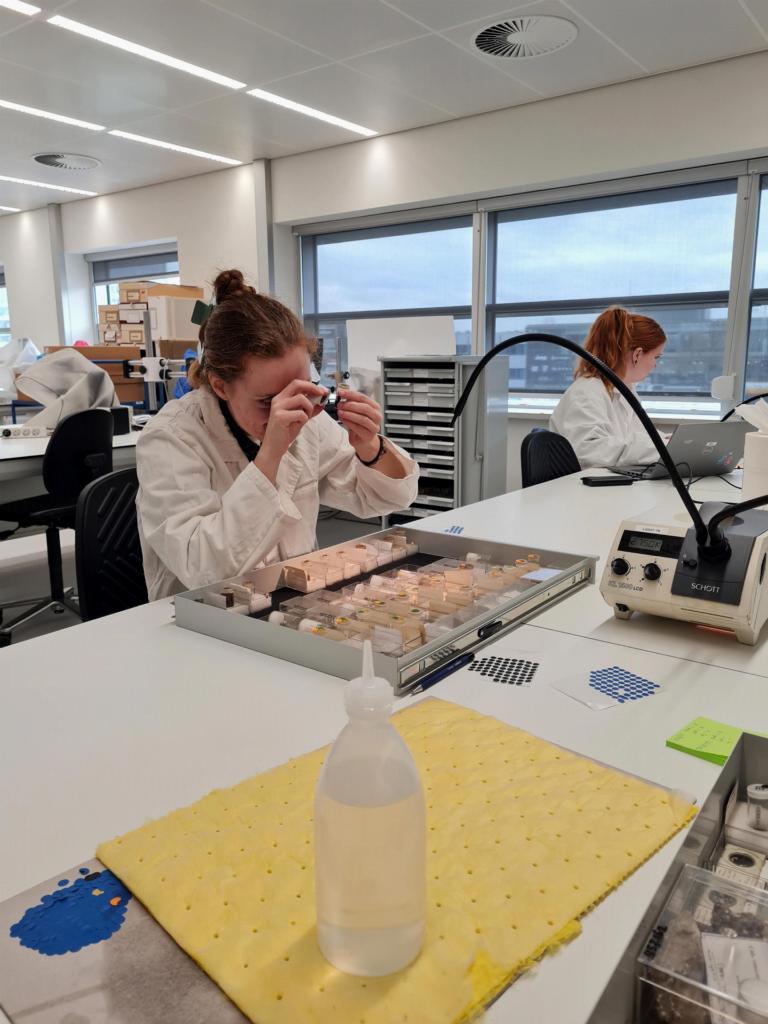
Much of the mollusc fossils in Naturalis' collections are stored in liquid, namely silicone oil. This was done to prevent or stop damage to the fossils. Part of work of the CollAction team was to check for damages in the mollusc fossils collection.
Checking the liquid collections
With liquid collections, one quickly thinks of fish on alcohol, or jellyfish on formalin. But some fossils are also on liquid, and that is on silicone oil. This is done to prevent, or stop, deterioration of fossils by pyrite rot (oxidation of pyrite). In the fossil mollusc collection, the CollAction team checked this deterioration, replenishing the silicone oil if necessary and replacing broken caps.
Damage bypyrite rot
In certain locations, pyrite can be found in the ground, such as in oligocene and miocene deposits in Belgium and the Netherlands. Fossils found on these locations may therefore be affected by pyrite rot. Pyrite is susceptible to corrosion and can damage degraded fossils beyond repair. The shells with pyrite in Ronald Pouwer's collection were mainly stored in jars with silicone oil.
A good understandingof the collections
The silicone oil seals the material from the outside world, preventing moisture and oxygen from influencing the oxidation process of the pyrite. Unfortunately, this was not always successful because the oxidation process has sometimes already started and very voluminous oxide and calcium-dissolving acid had already been produced. There is unfortunately nothing more that can be done about that. However, we do now have a good idea of the damage caused by pyrite rot in the collection.